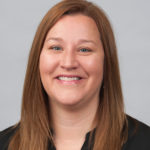When I enter a classroom, I usually can tell within the first few minutes what type of instruction is happening. Some of that has to do with concrete, objective observations–things I can mentally check off: Is the curriculum aligned to college- and career-ready standards? Are students doing grade-level work? But other, equally important components typically demand more of my attention. Are all students equally comfortable contributing? Is there a culture of respect and cooperation in the classroom? Do all students have equal agency? Do any students have agency?”
After more than 20 years in education, I’ve come to realize that students can have the same textbook in front of them (it can even be a really great textbook!) and have very different learning experiences. I’ve also learned that mastering academic content is only a part of what it means to actually be college- and career-ready. As a teacher, coach, and then administrator, these realities frustrated me. I knew that rigorous academics for all students had to be a priority, but good instruction was something more than just mastering the content.
When the Aspen Institute invited me to be a part of a diverse group of authors working to create guidance around that “something more,” I was excited. For too long, people had seen the objectives of social emotional learning (SEL) at odds with the goals of academics–as if you had to choose one or the other. But this group demonstrates that you don’t have to choose sides! Experts in academics, SEL, and more can all work in tandem to design a vision for education that demands high academic expectations for all students, while elevating the importance of social emotional skills and creating a culture where all students feel equally valued and understood. No longer do SEL content and academic content need to “take turns” being featured within professional learning. No longer do we need to feel torn between teaching grade level-content and separately teaching teamwork and collaboration to our students.
The outcome of this work was Integrating Social, Emotional and Academic Development: An Action Guide for School Leadership Teams, and one of the things I’m proudest of, as a co-author of this guidance, is how practical it is. It recognizes that education isn’t confined to just what happens in the classroom–the full school experience is something much more, and something in which everyone (students, teachers, school leaders, support staff, etc.) plays a role. The guidance makes that clear, and organizes the recommendations and guiding questions into five categories:
- Vision of Student Success
- Student Learning Experience
- Adult Learning in Support of Student Success
- Learning Environment and School Climate
- Asset Mapping and Resource Allocation.
The writing team also wanted to make it clear that creating a culture that supports social, emotional and academic development (SEAD) isn’t something that can be done in fits and starts, and it can’t be done overnight. It needs to be a daily commitment to changing interactions (how students interact with each other, how teachers interact with students, etc.) and there are specific ways school teams can commit to improving integration for the success of all students.
As a math specialist at Student Achievement Partners, having also served many years as a math educator and administrator, I found it critically important to me, personally, to understand that high-quality materials and grade-level content were always non-negotiables. Our goal with this guidance was to show how instruction around CCR-aligned content can include, and is even enhanced by, considering components of SEAD. To be prepared to use academic skills in the real world, you must also develop social skills–how to work in groups, how to resolve conflicts, how to cope with frustration.
We don’t have to sacrifice these social skills to deliver grade-level instruction. In fact, it should be considered a part of grade-level instruction. Some of the best textbooks, and most successful instructional designs and teaching strategies, include social development.
SEAD isn’t a behavior system; it is part of educating the whole child. It is time to examine practice, and my hope is that the questions and recommendations in this guidance will jump-start school teams into analysis and conversation.
















